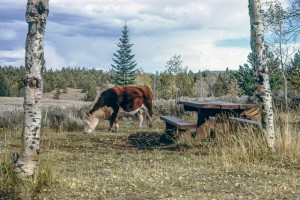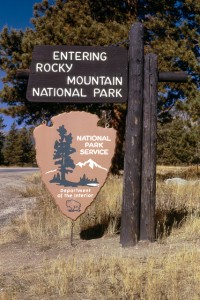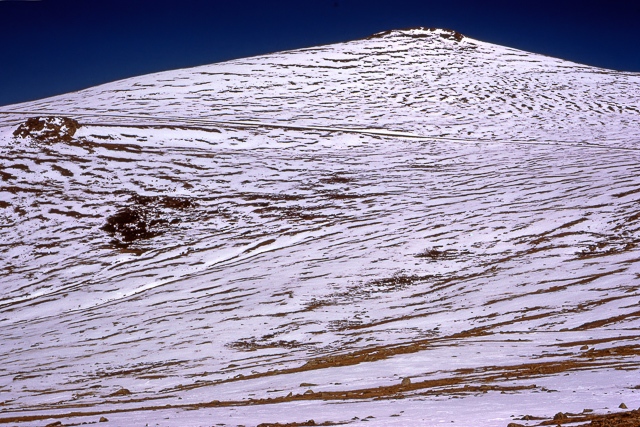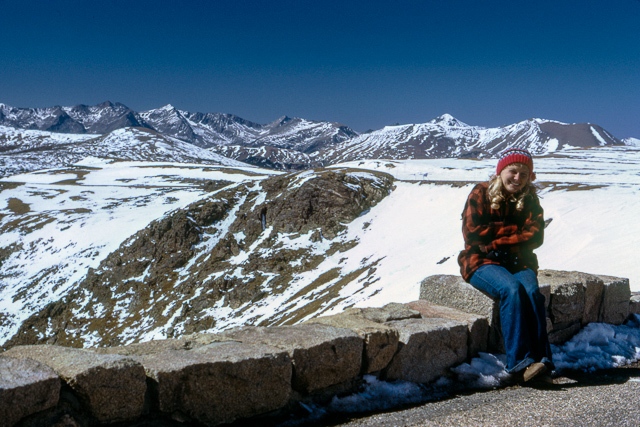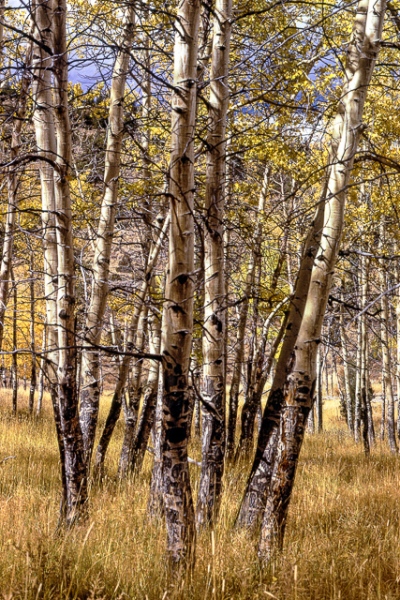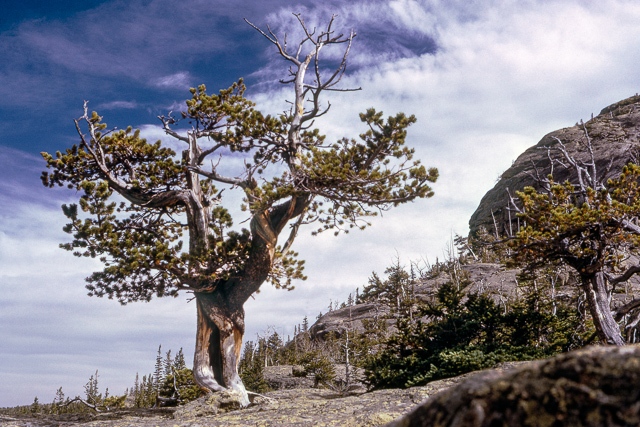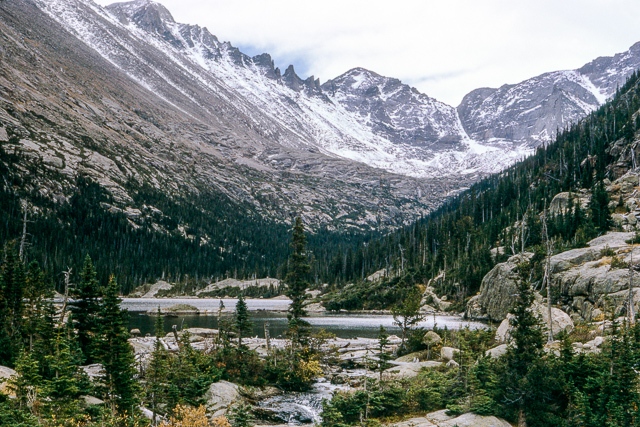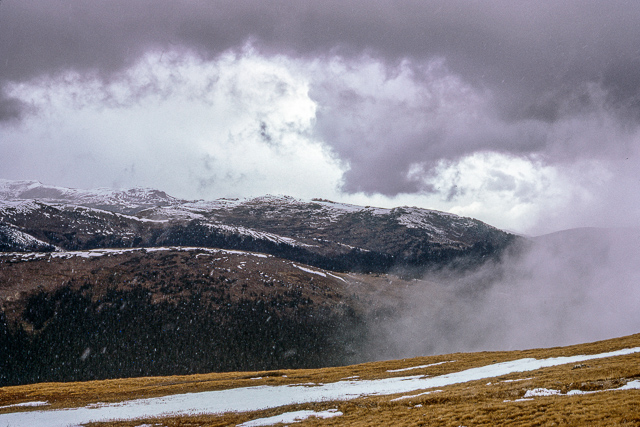The Trip – Part 4: Colored poodles, cows in the campground and Rocky Mountain National Park
We wanted to see Rocky Mountain National Park and hoped that we would have enough time before the weather got too cold, so we headed south out of the Tetons. Our plan was to catch I-80 and follow it east towards Laramie or Cheyenne and then head south into Colorado to reach the park. It was already late afternoon when we reached Rock Springs, Wyoming, where we would get I-80, so we decided to look for a place to camp. The only place we could find listed in our AAA campground guide was Albert’s Trailer Park. It did not look like much of a campground.
The guy at the desk (Albert?) said they did have tent spaces so we rented a spot for the night. It turned out to be the only patch of grass in the entire place and we were the only campers. We soon discovered that this was also the place where trailer park residents would walk their dogs in the evening. One group of 3 or 4 obnoxious poodles roamed around for a while. They may have originally been white but they were each dyed a different color like orange or blue. What a site and what a sight! We had to watch where we walked to keep our boots clean and were very glad to depart the next day.
The next night we stayed in a campground in Medicine Bow National Forest. This was again an open range and although we were the only campers, we had bovine guests. Fortunately, they were not as obnoxious as the poodles and they retained their natural color. Had I been a real wild west kind of guy we could have had fresh steak for dinner! We probably had tuna helper or chili. The next day we headed south into Colorado, drove up along the Big Thompson River and through Estes Park into Rocky Mountain National Park.
There was a certain mystique to the State of Colorado in the 70s. Rocky Mountain High, released in 1972, was a big hit for John Denver. James Michener’s book Centennial, which is a fictional history of Colorado, was a best seller in 1974 and became a TV mini-series. Many in the 60s generation felt that getting back to nature was an important mission in life. Backpacking and exploring the American West was the thing to do. So, we felt a certain excitement about reaching this mountain mecca. The beauty of this park did not let us down.
I was really impressed by the great hiking trails in the park. They often wound through the forests and ascended to beautiful back-country lakes. We enjoyed a wonderful hike from the Bear Lake Trailhead that took us past Nymph Lake, Dream Lake and ended at Emerald Lake. It was a relatively easy hike, only a couple miles each way and a moderate elevation gain. However, the time of year was perfect. The aspens were gold and the dearth of other hikers made us feel as if we had the park all to ourselves. We also hiked from the Glacier Gorge trailhead to Mills Lake and The Loch. This trail was a little longer and a little steeper but just as beautiful.
Of course, it’s hard to visit Rocky Mountain National Park without being impressed by the mountains. The park straddles the continental divide and is home to Long’s Peak, which is 14,255 feet above sea level, and about a score more of peaks that are over 13,000 feet. You don’t actually have to climb any mountains to attain a Rocky Mountain high, you only need to drive on the amazing Trail Ridge Road, which reaches an elevation of 12,183 feet. At this elevation you’re well above timber line and mountain peaks can be seen stretching off to the horizon. Although I thought the view was beautiful, I suspect that many west-bound pioneers looked at it somewhat differently.
One morning we stopped at the visitor center to check on the weather and were informed that a big storm would be moving in later that day and would probably bring enough snow to close Trail Ridge Road until next spring. That road was our planned route to Utah. We raced back to our campsite, tore down the tent and, ignoring our usual careful packing routine, tossed everything into the car and left the campsite. It started to snow as we ascended Trail Ridge Road and by the time we reached the pass, clouds surrounded us and the snow became quite heavy. It was mid-October and clear to us that our sojourn in the mountains was over.
Due to the snow and lack of visibility our descent from the pass was quite slow. Even when we were back to lower elevations the snow continued to fall. The road had already been closed and a gate was down to prevent people from heading east. A Ranger waited there and opened the gate so we could continue on our trek to what we hoped would be warmer and drier climes.
